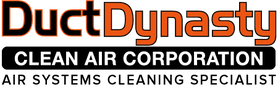|
In the realm of commercial air duct cleaning and HVAC system efficiency, one key factor that often takes center stage is static pressure. Static pressure plays a pivotal role in the performance of HVAC systems, influencing energy consumption, airflow, and overall system efficiency. This comprehensive guide will delve into the intricacies of static pressure, its impact on the commercial air duct cleaning process, and how it contributes to the overall efficiency of HVAC systems.
I. Understanding Static Pressure: Static pressure refers to the force exerted by air molecules against the walls of a duct system as air flows through it. It is measured in inches of water column (in. WC) and is crucial for assessing the resistance encountered by air as it moves through the ductwork. HVAC professionals often use static pressure measurements to evaluate the efficiency of a system and identify potential issues that may hinder optimal performance. II. Factors Influencing Static Pressure: Several factors contribute to static pressure in commercial HVAC systems: Duct Design and Layout: The design and layout of ductwork significantly impact static pressure. Poorly designed or improperly sized ducts can create unnecessary resistance, leading to increased static pressure and reduced system efficiency. Air Velocity: The speed at which air travels through the ducts affects static pressure. High velocities can contribute to turbulence and pressure drops, while low rates may lead to inefficient airflow. Air Filters: Dirty or clogged air filters and restrictive grilles can impede airflow, increasing static pressure. Regular maintenance and proper selection of filters can mitigate this issue. III. Role of Static Pressure in Air Duct Cleaning: Efficiency of Cleaning Equipment: Understanding and managing static pressure is crucial when engaging in commercial air duct cleaning. Cleaning equipment relies on a specific static pressure level to effectively remove contaminants from the duct surfaces. Properly calibrated equipment ensures efficient cleaning without causing damage to the ductwork. Identification of Blockages: Monitoring static pressure during the cleaning process helps identify blockages or obstructions in the ductwork. Elevated static pressure levels may indicate the presence of debris, dust, or other contaminants that need attention. IV. Achieving Optimal HVAC System Efficiency: Regular Maintenance: Implementing a routine maintenance schedule for both air ducts and HVAC systems is essential. This includes cleaning or replacing air filters, inspecting ductwork for damage or blockages, and ensuring proper airflow. Proper Duct Design and Installation: During new HVAC system installations or renovations, careful consideration of duct design and layout is imperative. Well-designed ductwork minimizes resistance, reducing static pressure and enhancing overall system efficiency. Balancing Airflow: Balancing airflow throughout the HVAC system helps maintain consistent static pressure levels. Balancing airflow involves adjusting dampers and registers to ensure an even distribution of air and confirming that all ducts are properly sealed to promote efficient airflow. In Summary: Within commercial air duct cleaning and HVAC system efficiency, static pressure emerges as a critical parameter. Understanding its significance, identifying contributing factors, and implementing measures to manage static pressure can lead to a more efficient HVAC system. By prioritizing static pressure considerations in cleaning and system maintenance, businesses can optimize energy consumption, enhance indoor air quality, and prolong the life of their HVAC investments.
0 Comments
Leave a Reply. |
AuthorWrite something about yourself. No need to be fancy, just an overview. Archives
July 2024
Categories |
-
PROUDLY SERVING
CENTRAL FLORIDA -
FOR STATEWIDE SERVICE
888.489.9222 -
DROP US A LINE!
[email protected]

 RSS Feed
RSS Feed